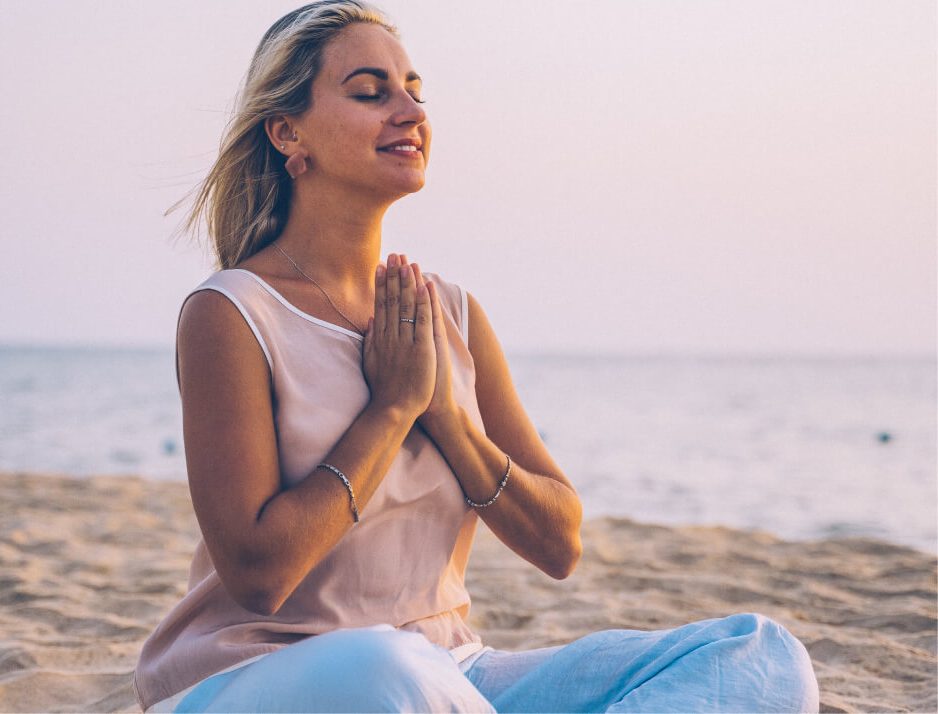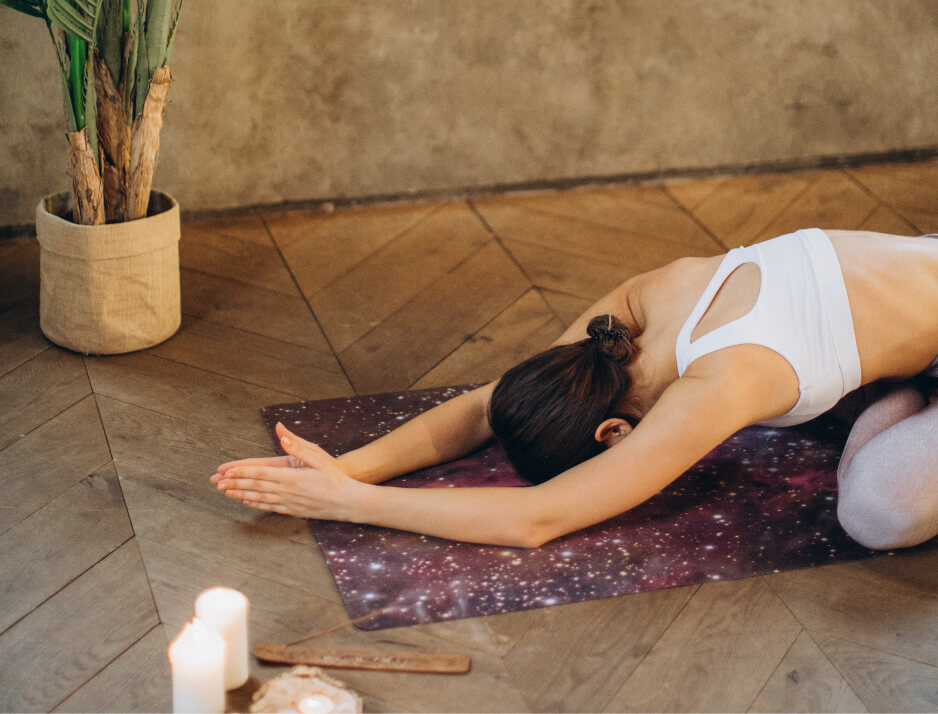
In the often-hurried rhythm of modern life, the yoga mat can become a sacred space for reconnection – a place to unfurl not just the body, but also the mind. Among the powerful asanas that facilitate this journey inward is Bhujangasana, or Cobra Pose. More than just a backbend, Bhujangasana is an invitation to cultivate profound mindfulness, awaken subtle energies, and tap into a wellspring of meditative calm. As we explore this graceful posture, we’ll uncover how its physical benefits beautifully intertwine with its capacity to soothe the mind and elevate the spirit.
The name “Bhujangasana” itself, derived from the Sanskrit words “bhujanga” (serpent or cobra) and “asana” (pose), evokes a powerful image. Like a cobra gently rising, hood extended, this pose encourages us to lift ourselves with awareness, to meet challenges with a calm yet alert presence. Symbolically, it represents the uncoiling of dormant energy, a shedding of old skins, and an awakening to our inner strength and wisdom.
The Physical Foundation for Inner Stillness
While our focus here is on the meditative aspects, the physical benefits of Bhujangasana create the necessary foundation for deeper mental and emotional exploration. When the body is at ease, the mind can more readily settle.
- Spinal Health and Flexibility: Bhujangasana is renowned for its ability to increase the flexibility and strength of the entire spinal column. It gently stretches the vertebrae, relieving stiffness and improving posture. A supple and healthy spine is crucial not just for physical well-being but also for the free flow of energy, which is intimately linked to our mental state.
- Opening the Heart and Lungs: The gentle arching of the back in Cobra Pose beautifully opens the chest and shoulders. This physical expansion translates to an enhanced capacity for breath. Deeper, fuller breaths calm the nervous system, reduce feelings of anxiety, and oxygenate the brain, leading to improved clarity and focus. This opening is also symbolically significant, representing an opening to compassion, connection, and emotional release.
- Stimulating Abdominal Organs: The pose applies gentle pressure to the abdominal region, which can aid digestion and stimulate the healthy functioning of internal organs. A comfortable digestive system contributes significantly to overall well-being and reduces physical distractions that can hinder meditative states.
- Strengthening and Toning: While it’s a gentle backbend, Bhujangasana engages and strengthens the muscles of the back, shoulders, arms, and glutes. This cultivation of gentle strength can foster a sense of empowerment and stability, both physically and mentally.
Bhujangasana: A Gateway to Mindfulness
Mindfulness, at its core, is the practice of paying attention to the present moment without judgment. Bhujangasana offers a rich landscape for cultivating this awareness.
- Breath as an Anchor: The breath is central to a mindful Cobra Pose. As you inhale to lift, you are invited to notice the expansion in your chest, the gentle unfurling of your spine. As you exhale, you might feel a grounding through your pelvis and legs, a subtle release of tension. Each breath becomes an anchor, drawing your attention away from the ceaseless chatter of the mind and into the felt sensations of your body.
- Somatic Awareness: Performing Bhujangasana mindfully requires a deep listening to the body. Where do you feel the stretch? Are your shoulders relaxed away from your ears? Is your neck long and comfortable? Are you engaging your back muscles or pushing too hard with your hands? This internal scanning and adjusting cultivates a rich somatic awareness, a key component of mindfulness. You learn to inhabit your body more fully.
- Embracing Impermanence: No two breaths are the same, and no two experiences of a pose are identical. Holding Bhujangasana, even for a short period, allows you to observe the subtle shifts in sensation, the effort, the ease. This practice of observing change without clinging to or resisting it is a powerful lesson in impermanence, a core tenet of mindful philosophy.
- Non-Judgmental Observation: Perhaps you can’t lift as high as you’d like, or you notice discomfort in a particular area. Mindfulness in Bhujangasana encourages you to simply observe these experiences without labeling them as “good” or “bad.” This non-judgmental stance fosters self-compassion and acceptance.
The Meditative Heart of the Cobra
Beyond moment-to-moment mindfulness, Bhujangasana holds profound meditative qualities, helping to still the fluctuations of the mind and connect us to a deeper sense of peace.
- Calming the Nervous System: The gentle backbend, coupled with conscious breathing, has a soothing effect on the sympathetic nervous system (our “fight or flight” response) and can activate the parasympathetic nervous system (our “rest and digest” response). This physiological shift naturally leads to a calmer, more meditative state.
- Emotional Release and Heart Opening: The chest is often considered a storehouse for emotions. The heart-opening action of Bhujangasana can facilitate the gentle release of pent-up emotional tension – grief, anxiety, or fear – creating space for feelings of joy, love, and openness. As you breathe into the expanding chest, you might visualize releasing any emotional burdens.
- Cultivating Inner Stillness: As you hold the pose, focusing on your breath and the sensations in your body, the mind gradually begins to quiet. The external world fades, and an inner stillness can emerge. This is the essence of meditation – a state of focused awareness where the mind is calm yet alert.
- Chakra Activation and Energy Flow: In yogic philosophy, Bhujangasana is believed to stimulate several chakras, or energy centers. It particularly resonates with the Anahata (heart) chakra, fostering compassion and connection, and the Manipura (solar plexus) chakra, enhancing personal power and self-esteem. It can also have a grounding effect on the Muladhara (root) chakra and awaken creativity through the Svadhisthana (sacral) chakra. The awareness of this subtle energy flow can deepen the meditative experience.
- Symbolism of Transformation: The serpent is a powerful symbol of transformation, shedding its skin to be reborn. Meditating on this symbolism while in Bhujangasana can inspire a sense of personal growth, resilience, and the ability to overcome obstacles and fears.
Approaching Bhujangasana with Mindful Intention: A Step-by-Step Guide
- Begin by Lying Down: Start by lying prone (on your stomach) on your yoga mat. Extend your legs straight back, with the tops of your feet resting on the mat. Allow your forehead to rest gently on the floor. Take a few moments here to connect with your breath, feeling the gentle rise and fall of your abdomen against the mat.
- Hand Placement: Place your palms flat on the mat, under your shoulders, with your fingertips pointing forward. Keep your elbows tucked in close to your ribcage. Feel a sense of grounding through your hands.
- Engage Your Legs and Core: Press the tops of your feet, thighs, and pubic bone gently into the floor. This engagement creates a stable base and helps protect your lower back. Lightly engage your abdominal muscles to support your spine.
- The Gentle Lift (Inhale): On an inhalation, begin to peel your head, chest, and shoulders off the floor. Lead with your heart, allowing the movement to originate from your upper and mid-back rather than by forcefully pushing with your hands. Keep your shoulders relaxed down and away from your ears. Your gaze can be slightly forward or gently upwards, ensuring your neck remains long and comfortable – an extension of your spine.
- Finding Your Expression: Only lift as high as is comfortable for your body. This might be a “Baby Cobra” with minimal lift and forearms remaining on or close to the floor, or a fuller expression with arms straighter (but avoid locking the elbows). The emphasis is on lengthening the spine and opening the chest, not on the height of the lift.
- Hold and Breathe (Mindful Awareness): Hold the pose for 3-5 breaths, or longer if comfortable. Maintain your mindful awareness:
- Feel the breath: Notice the expansion in your chest with each inhale, the grounding with each exhale.
- Scan your body: Are your shoulders relaxed? Is your jaw soft? Are your glutes engaged but not clenched?
- Observe sensations: Acknowledge any feelings of stretch, effort, or release without judgment.
- The Gentle Release (Exhale): On an exhalation, slowly and mindfully lower your torso, chest, and forehead back down to the mat.
- Rest and Integrate: Turn your head to one side and rest your arms alongside your body. Take several breaths here, noticing the effects of the pose. Feel the echo of the stretch, the quality of your breath, and the state of your mind.
Variations for Deeper Exploration:
- Sphinx Pose (Salamba Bhujangasana): A gentler variation where the forearms rest on the floor with elbows directly under the shoulders. This is excellent for beginners or those with lower back sensitivity.
- Twisting Cobra: From Cobra, gently twist your upper body to look over one shoulder, deepening the stretch along the sides of the torso.
- Dynamic Cobra: Flow gently between lying flat and lifting into Cobra with your breath – inhaling to rise, exhaling to lower. This can be a beautiful moving meditation.
Important Considerations (Contraindications):
While Bhujangasana offers immense benefits, it’s important to practice with awareness and respect for your body’s limitations. Avoid this pose or practice with extreme caution and the guidance of an experienced teacher if you:
- Are pregnant
- Have a recent back injury or surgery
- Suffer from carpal tunnel syndrome
- Have had recent abdominal surgery
- Experience severe headaches
- Have very high blood pressure
Always listen to your body. If you feel any sharp pain, gently release the pose.
Uncoiling Your Inner Peace
Bhujangasana is more than a physical posture; it’s a sacred tool for self-discovery. By approaching Cobra Pose with mindfulness and an open heart, we can move beyond the physical mechanics and tap into its profound meditative effects. It teaches us to rise with gentle strength, to open ourselves to the breath and to life, and to find a quiet, steady center amidst the complexities of our world. As you incorporate Bhujangasana into your practice, may you discover not only a more flexible spine but also a more serene and centered mind, uncoiling the boundless peace that resides within.


